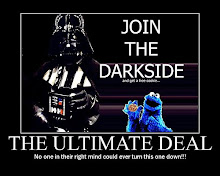Kind of funny that there has been a lot of talk this week about streaming media, most notably Google TV.
Part of the reason I find this so interesting is that Google TV was the focus of the mid-term exam for Consumer Behavior class this week. Some of my take-aways from digging into this are below.
As a disclaimer, I canceled cable about a year and half or so ago, once Netflix started streaming through the PS3. I have a PS3 and Wii that we stream Netflix to, and I have a VGA to HDMI cable that I use to hook up my MacBook Pro to my television as well, so we have been streaming for quite some time, and we all love it, not missing cable at all to this point. I guess that makes me a prime candidate for one of these boxes...we'll have to see.
Market Segmentation & Relationship Marketing
Google will have to very specifically define their marketing segments, as they will evolve and grow through the product lifestyle. Each of these segments will also need different relationship marketing needs.
The initial release of Google-TV will face much of the same problems that Apple TV and MS Media Centers have: penetrating past early-adoption techies into the general population. As they break the population down into segments, a relationship plan will have to be developed to meet the needs of each group. Current Netflix subscribers will need different information than a customer who only has a cable and Internet subscription. A potential customer who already streams Netflix through their PS3 is going to have different prejudices and perspectives than either of the previously mentioned segments.
Google does have some experience in selling their software in third party hardware when they sold the Nexus One early in 2010. The difference here, however, will be that Google will not own the sales channel for Google-TV. This is a very important variable in Google’s relationship with their customers, especially with the high involvement of the research and decision making process.
This will also be a change for consumers who have grown accustomed to Google’s free products: Gmail, Analytics, Voice, Search, YouTube, documents, and Blogspot. In order for customers to get the full benefit of Google-TV they will have to have subscriptions to other services such as Hulu, Netflix, and HBO. If not managed correctly, customers could feel that Google is not delivering on the bill of goods sold to them, and could change consumer’s view of all Google products.
Partnerships
So much of Google-TV’s perceived value and success is dependant on the relationships they have developed, have lost, and are working on with their vendors. These partnerships are of vital importance to Google, because without them the Google-TV software is a complete failure.
Among the most dangerous of these partnerships are cable/broadband providers. This relationship has already drawn a major strike against Google-TV, as CBS, ABC, and NBC have already begun blocking Google-TV from accessing full-length episodes through their sites. If the most popular sites block Google due to worries about how it affects the revenue generation abilities of those companies, Google-TV loses value quickly. Along with sites being blocked, consumers will have to make decisions on paying for subscriptions to other partners such as Netflix and Hulu, and if they find value in adding these services to current cable subscriptions (or if they will feel they have to choose between Google-TV and its premium services or current cable television packages).
We still have not touched on how these partnerships also come with their own brand reputations, which will also affect consumers’ decisions on weather to purchase these extra hardware pieces to access Google-TV. For starters, Logitech and Sony are both well-known brands in the electronics marketplace. In Sony’s case, they also make PCs that connect to the Internet, and possibly more importantly, make the PS3. The PS3 also has Netflix capabilities, plays Blu-ray DVDs, and connects to the Playstation Network for streaming video capabilities.
All of these partnerships will also play into the segmentation of the market. With the added ability to segment the market based on these relationships, it also means that there are many data points from multiple sources for consumers to decipher that Google has no control over. This is an aspect that Apple has been able to use to their benefit over the last decade: they control the hardware, software, and distribution channels. The multiple data points can also give the consumer more perceived risks about the Google-TV products.
With the way that Google’s partnerships and relationship marketing influence the segmentation of the market, I would encourage those to be the first aspect to concentrate on when marketing Google-TV in a competitive and potentially volatile marketplace. The lack of knowledge and experience that the general population has about these types of products, the learning curve could be step and will require high involvement form customers, Google, and their partners.
Customers are making more than just a decision to by a piece of hardware to watch Internet video. They are giving up space in their entertainment centers, and HDMI connection to their televisions, spending another $300, plus possibly more in premium services, and may even be deciding whether or not to continue to subscribe to cable or satellite services. Google cannot afford to approach this as a beta the way they did with the Nexus One. Internet providers are not in need of video hardware and software options to gain an edge in the market they way mobile network providers needed options to take on AT&T and the incredibly popular iPhone with the Android operating system. If Google-TV and Apple TV (for examples) fail, consumers may feel that they are at the mercy of cable and satellite providers and that Google cannot back up the promises they make to their customers.
Tuesday, October 26, 2010
Subscribe to:
Post Comments (Atom)




No comments:
Post a Comment